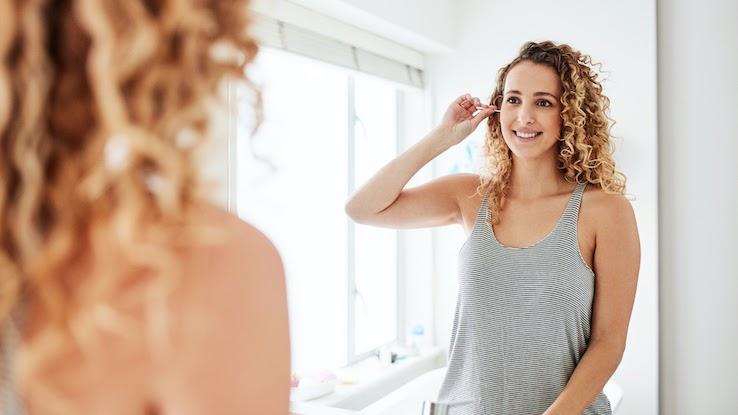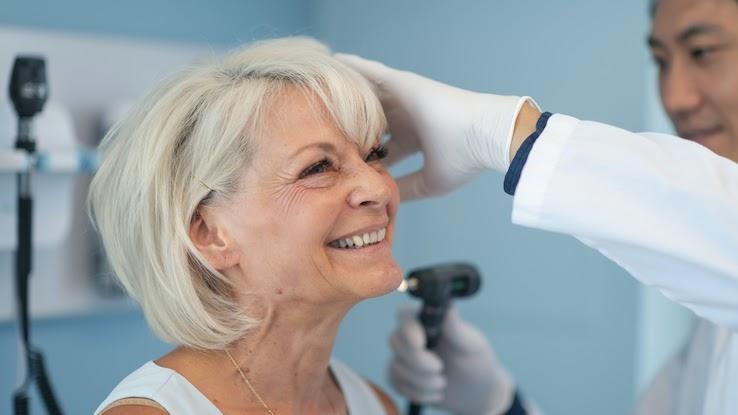Safe and Easy Way to Flush Ear

Cleaning your ears properly can be tricky. Do you use a cotton swab to clean your ears? Or does that move the wax farther inside your ear? Can a cotton swab damage your eardrum? So many questions can arise when you're talking about the techniques people use to clean their ears. So, it can be challenging to separate truth from myth. If your ears are due for a cleaning, read on to find out the proper way to do so.
Earwax is your ears' natural way of protecting themselves against potentially harmful substances such as dirt and bacteria. It's made up of a combination of sebum, dead skin cells and cerumen — a waxy substance that your sweat glands produce.
There are three types of earwax:
- Soft, wet earwax: Typically found in children, this earwax tends to feel sticky.
- Hard, wet earwax: This type is more likely to become impacted in your ear and has a drier, firmer texture.
- Dry earwax: This is flaky, golden in color and is most common in people from Asian countries.
Earwax is necessary for your inner ear. It keeps it moist and shielded from water and infections. But earwax can also cause difficulties if you don't take care of your ears properly. Sometimes, earwax can block your ear canal, which can be painful and keep you from hearing well. If too much earwax forms in your ear, it can also impair your hearing and even lead to an infection.
How Can You Safely Remove Earwax?

Most of the time, earwax will fall out on its own. Sometimes, though, you need to remove it if you're experiencing any of the following symptoms:
- Vertigo
- Tinnitus
- Earache
- Coughing
- Hearing loss
So, how exactly should you remove excess earwax? For starters, try ear drops. They can soften the wax, making it easier for the wax to fall out on its own. Doctors usually prescribe this treatment as a first step in getting rid of an ear blockage. But, drops are also effective at removing unwanted wax. Pour two to three drops in your ear and lie with that ear facing up so the drops can work their way into the wax. Repeat this process three to five times a day, depending on how much wax you need to remove.
If you're having persistent trouble with earwax, you may need to get your ear irrigated. This procedure is painless and involves squirting a steady stream of warm water into your ear canal to remove the built-up wax. However, you shouldn't try this procedure if you have a perforated eardrum, an ear infection or earache, or a cleft palate. Ask your healthcare provider prior about trying ear irrigation in their office.
Home Remedies to Try for Removing Earwax
Under your doctor's guidance, you can also try a home remedy to remove your earwax and prevent any problems it may cause. These at-home techniques can all be effective.
Use a Wax Softener
Olive oil, baby oil or mineral oil can all soften wax, making it easier for it to fall out of your ear. Use an eyedropper or a bulb syringe to apply a few drops of the softener of your choice twice a day for up to four or five days.
Try Warm Water
Using an eyedropper or bulb syringe, apply a few drops of warm water to your ear. Tilt your head back while pulling the tip of your ear up and back to ensure your ear canal is in a straight position. Apply the drops and let them sit for a few seconds. Turn your head to the side to let the liquid drain. Then, wipe the outside of your ear with a washcloth. This procedure works well if you've already been softening the wax for a few days.
Buy a Removal Kit
There are many earwax removal kits on the market that are safe to use at home. But, you may want to talk to your doctor if you aren't sure which one to buy. If none of these remedies work, you'll also want to consult with your doctor about trying another removal procedure.
Now that you understand how to remove your earwax, it's also important to remember how not to remove earwax. The most significant mistake people make when cleaning their ears is to use a cotton swab. This simply pushes the earwax farther into your ear and can even tear a small hole in your eardrum if you shove the swab in too far. Next time you want to clean out your ears, drop the cotton-coated sticks and try a safer, more effective treatment.
Resource Links:
"Cerumen Impaction Removal in General Practices: A Comparison of Approved Standard Products," U.S. National Library of Medicine, National Institutes of Health
"Ear wax removal: Help patients help themselves," U.S. National Library of Medicine, National Institutes of Health
"Ear wax removal interventions: a systematic review and economic evaluation," U.S. National Library of Medicine, National Institutes of Health
"Cerumen Impaction Removal – StatPearls," U.S. National Library of Medicine, National Institutes of Health
"Ear wax," U.S. National Library of Medicine, National Institutes of Health
"Management of earwax – Hearing loss in adults," U.S. National Library of Medicine, National Institutes of Health
Source: https://www.symptomfind.com/healthy-living/how-get-wax-out-of-ears?utm_content=params%3Ao%3D740013%26ad%3DdirN%26qo%3DserpIndex&ueid=59e3ec58-b9ed-4896-bb4c-5738ffe40a69
0 Response to "Safe and Easy Way to Flush Ear"
Postar um comentário